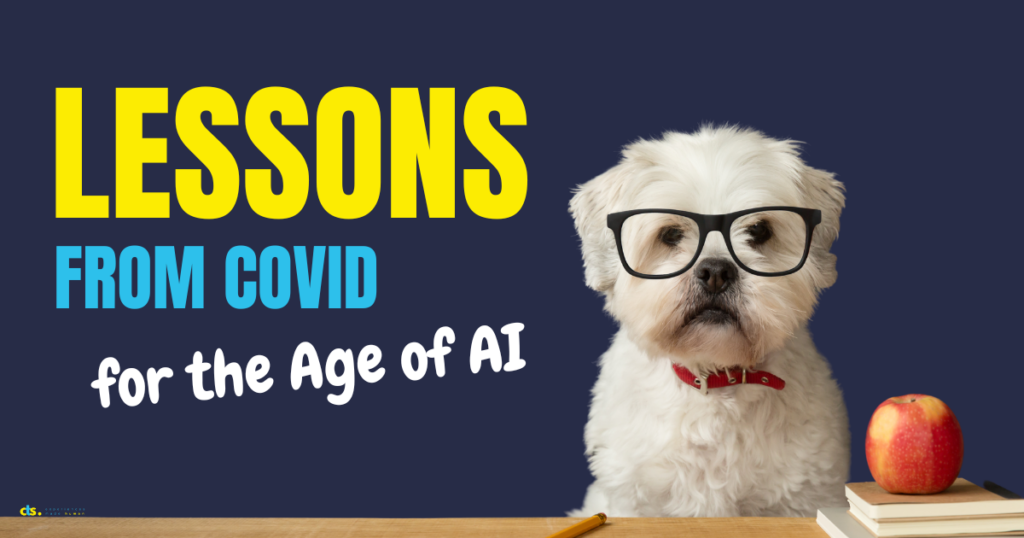
If you read customer experience news or trade websites, the percentage of articles that are in some way related to artificial intelligence is remarkable. While I haven’t counted them–obviously–it must be over 50 percent and could be as high as 60 to 70 percent.
It’s not that AI is a new topic; it’s not. And it’s not that AI is not improving; it is, at a dizzying pace. It’s that AI can still only do certain things.
And one perspective I’d like to share with you actually comes from our shared experience with COVID.
I’m sure you remember the bold predictions that were flying around during the height of the lockdowns. We were told that people would not go back to stores, that people would become accustomed to shopping digitally, that people would not want to return to the office, and that we were transitioning to a new normal. Digital, supposedly, had finally killed retail and in-person business models.
Yet, these predictions turned out to be only partially true.
Yes, consumer shopping habits were forever altered. People who were not comfortable doing so before learned to use digital service channels. Business models that were already being pressed by a digitally-transformed landscape found their challenges multiplied and not all survived.
On the labor front, the prognostications were at least halfway accurate. Despite the cost savings, many companies found disadvantages in remote work forces, but their employees enjoyed the freedom and flexibility of working from home and did not want to go back. The heated discourse around forced RTO (return to office) in the last year is only proof of that.
However, despite the COVID-inspired push into more digital experiences, we also saw something on the consumer side that defied the predictions–something crucial to bear in mind as predictions about AI swirl around us.
People could not wait to get back to being with other people. People could not wait to start having in-person shared communal experiences, whether it was bowling, going to concerts, going to parks, or going to cafes and restaurants.
I won’t drop 20 links here, but there is a mountain of evidence that we are social creatures and do not do well in isolation. In ten years. Who knows? AI may be so good that our brains receive what they need from interacting with robots. (Our brains aren’t really great at distinguishing reality, so this is absolutely possible.)
But not yet.
Currently, we’re surrounded on all sides by the media telling us how important AI is and how it’s going to disrupt everything. And it is.* However, similar to the COVID-era predictions about future consumer behavior, I think that the predictions are over-hyped from the perspective of delivering the customer experiences we want to deliver.
Today, right now, humans can connect and generate an emotional response that AI tools simply cannot.
For the foreseeable future, a human experience is still the ultimate competitive advantage, and the more you can lean into human connection, relationships, and/or shared experiences, the more you can provide the rich emotional experiences that make customers stick and that permeate our human essence, making us want to come back for more.
* To keep this post manageable, I have kept it narrowly focused on AI and the human aspects of customer experience, avoiding AI’s impact on jobs, economies, and other areas of society. These impacts will be swift, sometimes miraculous, frequently devastating, and will affect us all.
© 2011-2025 CTS Service Solutions, LLC.
All rights reserved.
Legal Information | Privacy Policy
How to Cite this Site